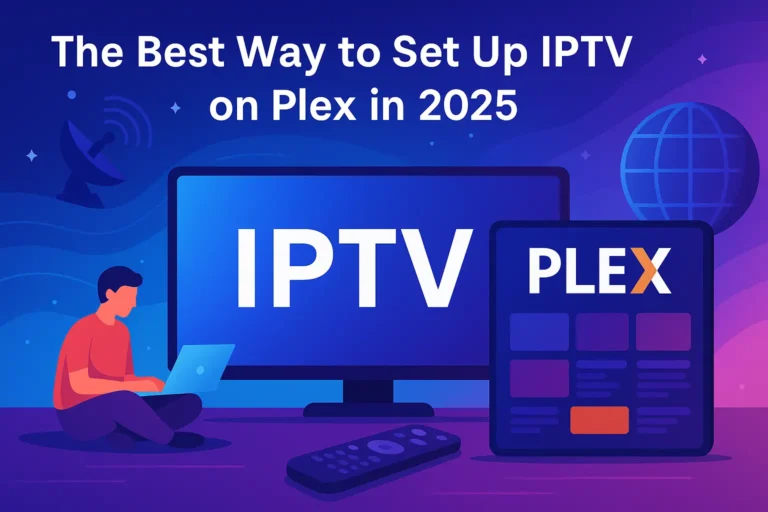Explore the most comprehensive list of IPTV streaming services. Stay ahead with the latest options for live TV streaming—start your seamless viewing experience now.
Table of Contents
What Are IPTV Streaming Services?
Internet Protocol Television (IPTV) streaming services represent the evolution of how we consume television content in the digital age. Unlike traditional broadcasting methods that rely on satellite signals or cable infrastructure, IPTV streaming services deliver television content through internet protocols. This revolutionary approach to content delivery has transformed the entertainment landscape, offering viewers unprecedented flexibility and control over their viewing experience.
The surge in popularity of IPTV streaming services can be attributed to their ability to adapt to modern viewing habits. As consumers increasingly pivot away from rigid cable packages, these internet-based alternatives provide a welcome solution that aligns with our on-demand, multi-device lifestyles. With the ability to access content across various devices and customize viewing options, IPTV has established itself as a formidable competitor to conventional television delivery systems.
Definition and How It Works
IPTV (Internet Protocol Television) refers to television content that’s delivered through internet protocols rather than through traditional satellite or cable formats. These IPTV streaming services use a packet-based delivery system to transmit video content directly to viewers’ devices. The process involves several key components working in harmony:
- Content Acquisition and Storage: Service providers gather and store television content on specialized servers.
- Processing and Encoding: The content is processed and compressed into digital formats optimized for streaming.
- Content Delivery Network (CDN): A distributed network of servers ensures content is delivered efficiently to users regardless of their location.
- User Interface: Viewers access content through applications on various devices, including smart TVs, streaming boxes, computers, and mobile devices.
When a user selects content to watch, their device sends a request to the service provider’s servers. These servers then stream the requested content directly to the user’s device through their internet connection, creating a seamless viewing experience.
Key Differences from Traditional Cable/Satellite
Understanding what sets IPTV streaming services apart from traditional television delivery methods highlights why they’ve gained such significant market traction:
| Feature | IPTV Streaming Services | Traditional Cable/Satellite |
|---|---|---|
| Delivery Method | Internet protocols (broadband or fiber) | Coaxial cables or satellite signals |
| Content Selection | Customizable packages and à la carte options | Predetermined channel bundles |
| Device Compatibility | Multiple devices (TVs, smartphones, tablets, computers) | Primarily television sets with dedicated equipment |
| On-Demand Content | Extensive libraries included with service | Limited, often with additional fees |
| Contract Requirements | Typically month-to-month or annual | Often multi-year contracts with early termination fees |
| Installation | Self-installation via apps or simple devices | Professional installation with specialized equipment |
Unlike traditional cable or satellite services that broadcast all channels simultaneously with viewers tuning into their desired channel, IPTV streaming services transmit only the channel or content the viewer has requested. This on-demand approach represents a fundamental shift in how television content is consumed and delivered.
Top Benefits of IPTV Over Traditional Cable
The migration from conventional television services to IPTV streaming services continues to accelerate as consumers recognize the substantial advantages these modern platforms offer. The benefits extend beyond mere convenience, addressing long-standing frustrations with traditional cable and satellite providers while introducing new possibilities for content consumption.
Flexibility in Channel Selection
One of the most significant advantages of IPTV streaming services is the unprecedented control they give viewers over their channel lineups. This flexibility manifests in several ways:
- Customizable Packages: Rather than being forced to pay for hundreds of channels you never watch, many IPTV providers allow you to select smaller, more targeted channel bundles.
- Add-on Options: Most services offer specialized add-on packages for sports, premium movie channels, or international programming that can be added or removed monthly as needed.
- À la Carte Possibilities: Some progressive IPTV streaming services have begun offering true à la carte selection, where viewers can handpick individual channels.
- No Long-Term Commitments: Unlike cable contracts that lock you in for years, most IPTV services operate on a month-to-month basis, allowing you to adjust or cancel your subscription as your viewing needs change.
This level of customization ensures viewers only pay for content they actually want to watch, potentially eliminating the long-standing frustration of subsidizing unwatched channels.
Cost-Effective Pricing Models
The financial advantages of switching to IPTV streaming services can be substantial for many households:
- Lower Base Costs: Most IPTV services start at significantly lower price points than traditional cable packages, with basic plans often beginning around $25-35 per month rather than $60-100 for comparable cable packages.
- Elimination of Hidden Fees: IPTV providers typically don’t charge egregious fees for equipment rental, HD service, regional sports, or other add-ons that inflate cable bills.
- No Installation Costs: Self-installation eliminates the need for expensive professional set-up services.
- Scalability: The ability to easily upgrade or downgrade service means viewers can adjust their spending seasonally (e.g., adding sports packages only during certain seasons).
A 2022 analysis revealed that the average household could save between $50-120 per month by switching from traditional cable to an IPTV streaming service, representing potential annual savings of $600-1,440.
Multi-Device Compatibility
Perhaps the most revolutionary aspect of IPTV streaming services




